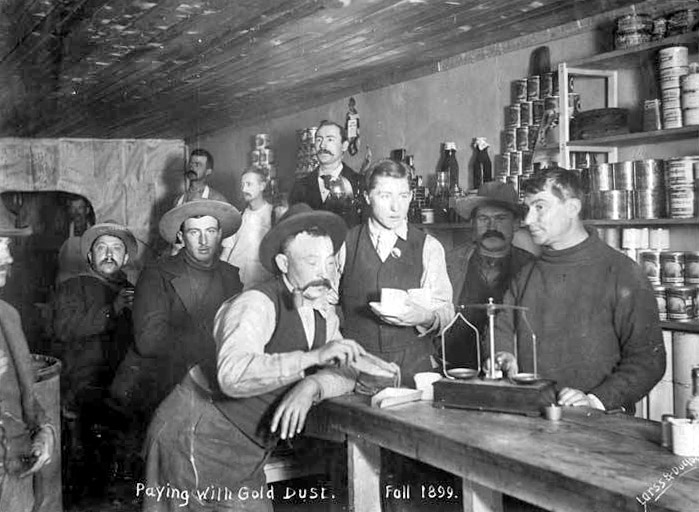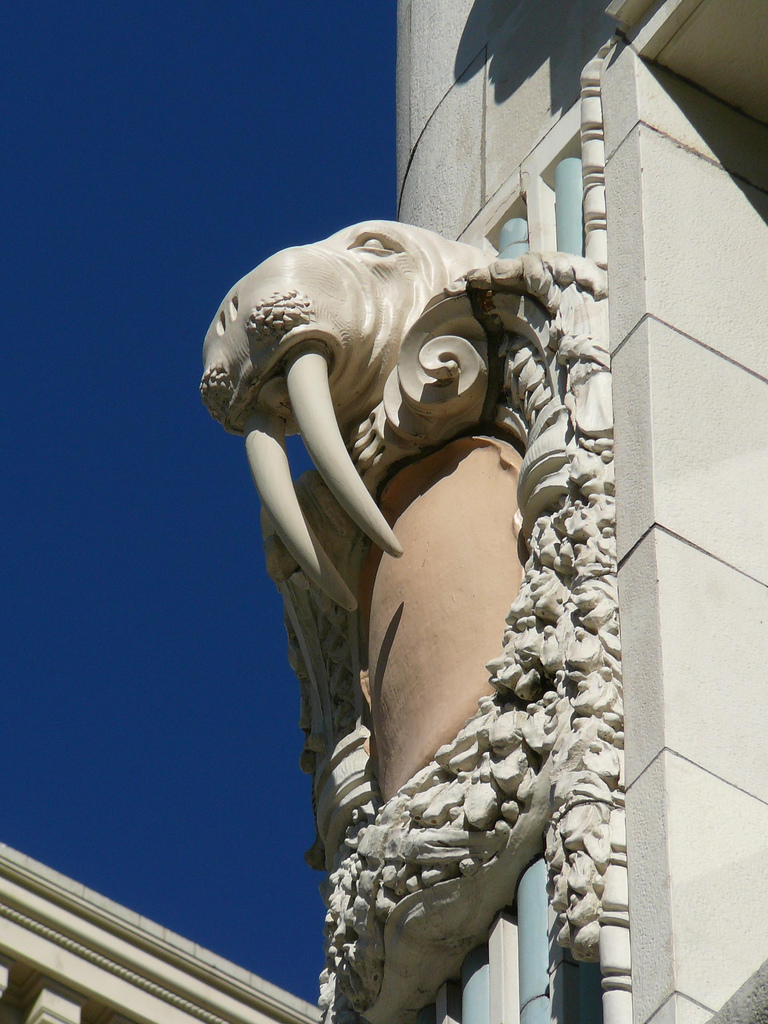|
Per Edvard Larss
Larss and Duclos was a photographic studio partnership between Per Edvard Larss and Joseph E. N. Duclos (1863-1917) in Dawson City, Yukon Territory during the Klondike Gold Rush era of the late 19th and early 20th centuries. Duclos was born in Quebec and moved to Maine where he learned photography. He moved to Dawson with his wife Emily in 1898 via St. Michael, Alaska and the Yukon River. He mined on Lovett Gulch until he joined the studio. Duclos specialized in portraits while Larss photographed gold rush scenes and scenery. Larss and Duclos took over the studio of Eric A. Hegg, who arrived in Skagway in October 1897 after a short stop in Dyea. He immediately opened a studio and was joined a year later by his brother and a friend of the two brothers, Peter Andersson, along with Per Edvard Larss in the following spring, who also was a Swedish-American photographer. In 1899, after a year in Yukon, Hegg returned to Skagway and left his studio in Dawson to Larss and Duclos. Duclos ... [...More Info...] [...Related Items...] OR: [Wikipedia] [Google] [Baidu] |
Dawson City
Dawson City, officially the City of Dawson, is a town in the Canadian territory of Yukon. It is inseparably linked to the Klondike Gold Rush (1896–99). Its population was 1,577 as of the 2021 census, making it the second-largest town in Yukon. History Prior to the Late Modern Period, the area was used for hunting/gathering by the Hän-speaking people of the Tr’ondëk Hwëch’in and their forebears. The heart of their homeland was Tr'ochëk, a fishing camp at the confluence of the Klondike River and Yukon River, now a National Historic Site of Canada, just across the Klondike River from modern Dawson City. This site was also an important summer gathering spot and a base for moose-hunting on the Klondike Valley. The current settlement was founded by Joseph Ladue and named in January 1897 after noted Canadian geologist George M. Dawson, who had explored and mapped the region in 1887. It served as Yukon's capital from the territory's founding in 1898 until 1952, when ... [...More Info...] [...Related Items...] OR: [Wikipedia] [Google] [Baidu] |
Dyea
Dyea ( ) is a former town in the U.S. state of Alaska. A few people live on individual small homesteads in the valley; however, it is largely abandoned. It is located at the convergence of the Taiya River and Taiya Inlet on the south side of the Chilkoot Pass within the limits of the Municipality of Skagway Borough, Alaska. During the Klondike Gold Rush prospectors disembarked at its port and used the Chilkoot Trail, a Tlingit trade route over the Coast Mountains, to begin their journey to the gold fields around Dawson City, Yukon, about away. Confidence man and crime boss Soapy Smith, famous for his underworld control of the neighboring town of Skagway in 1897–98 is believed to have had control of Dyea as well. The port at Dyea had shallow water, while neighboring Skagway had deep water. Dyea was abandoned when the White Pass and Yukon Route railroad chose the White Pass Trail (instead of the alternative Chilkoot Trail), which began at Skagway, for its route. Use of the n ... [...More Info...] [...Related Items...] OR: [Wikipedia] [Google] [Baidu] |
Arctic Club
The Arctic Club Building is a ten-story hotel in Seattle, Washington located at the Northeast corner of Third Avenue and Cherry Street. Built in 1914 for the Arctic Club, a social group established by wealthy individuals who experienced Alaska's gold rush ( Klondike Gold Rush), it was occupied by them from construction until the club's dissolution in 1971. It is entirely faced with cream white terra cotta with submarine blue and orange-brown accents. The building is recognizable by the terra cotta walrus head sculptures lining the third floor of the building and its iconic polar bear in the Polar Bar, the hotel's bar and cocktail lounge. It is one of the finest examples of multi-colored matte glaze terra cotta work in the city. Recently restored, the building has been adapted for use as a luxury hotel, Arctic Club Seattle (a boutique hotel in the Oxford Collection portfolio). A rooftop garden used by the social club was replaced with a penthouse office suite. It was designed by a ... [...More Info...] [...Related Items...] OR: [Wikipedia] [Google] [Baidu] |
Fairview Hotel
Fairview may refer to: Places Canada * Fairview, Alberta (other) * Fairview, British Columbia * Fairview, Nova Scotia * Fairview, Kenyon Township, North Glengarry, Ontario * Fairview, Vancouver, British Columbia New Zealand * Fairview, Bay of Plenty, a settlement near Katikati * Fairview, New Zealand, a locality near Timaru * Fairview Heights, New Zealand, a suburb of Auckland * Fairview Downs, a suburb of Hamilton South Africa * Fairview, Barkly East, Eastern Cape * Fairview, Gauteng, Johannesburg * Fairview, Mossel Bay, Western Cape United States *List of places called Fairview in the United States Other countries * Fairview, Dublin, Ireland * Fairview, Quezon City, Philippines * Fairview, Cheltenham, UK Houses and homes * Fairview, Maleny, Queensland, Australia, a heritage-listed house * William Jennings Bryan House (Lincoln, Nebraska), U.S., also known as Fairview * Fairview (Delaware City, Delaware), U.S. * Fairview (Odessa, Delaware, 1773), U.S. * Fairview ( ... [...More Info...] [...Related Items...] OR: [Wikipedia] [Google] [Baidu] |
Royal Museum Of British Columbia
Founded in 1886, the Royal British Columbia Museum (sometimes referred to as Royal BC Museum) consists of The Province of British Columbia's natural and human history museum as well as the British Columbia Provincial Archives. The museum is located in Victoria, British Columbia, Canada. The "Royal" title was approved by Queen Elizabeth II and bestowed by HRH Prince Philip in 1987, to coincide with a Royal tour of that year. The museum merged with the British Columbia Provincial Archives in 2003. The Royal BC Museum includes three permanent galleries: Natural History, Becoming BC, and the First Peoples Gallery. The museum's collections comprise approximately 7 million objects, including natural history specimens, artifacts, and archival records.2010-11 Annual Report, p. 40 The natural history collections have 750,000 records of specimens almost exclusively from BC and neighbouring states, provinces, or territories. The collections are divided into eight disciplines: Entomology, B ... [...More Info...] [...Related Items...] OR: [Wikipedia] [Google] [Baidu] |

.jpeg)

